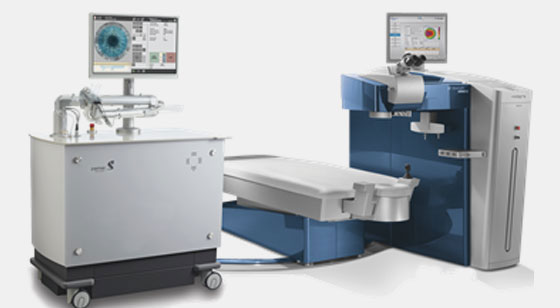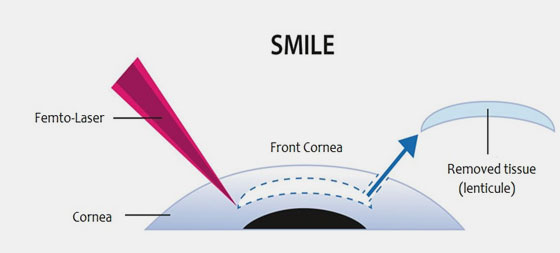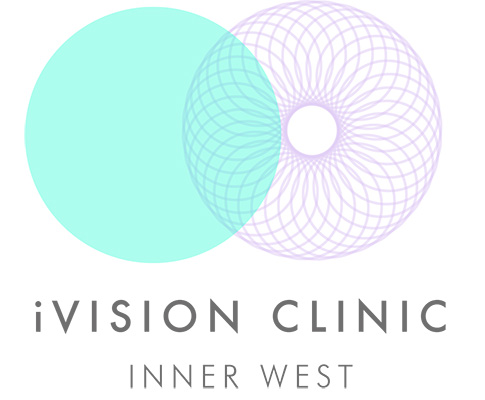Refractive Eye Surgery
iVision Clinic Inner West prides itself on providing its patients with the latest technology and innovations in refractive eye surgery.
There are a multitude of procedures and techniques available to help you eliminate the need for your spectacles or contact lenses.
These procedures include LASIK, PRK ,SMILE and a variety of intraocular lens procedures.
Only through a detailed and comprehensive eye examination and by talking to you, can the Surgeon confirm that you would make a suitable candidate and decide on which procedure would best suit your particular eye condition and needs.
iVision Clinic Inner West offers a complimentary laser vision correction consult to assess your suitability for laser vision correction and will tailor the options to your needs.
Am I a suitable candidate?
The following criteria need to be met in order to be considered for laser eye surgery:
- Over 20 years age
- A stable prescription for a period for 12-18 months
- Not pregnant or breast feeding
- Healthy eye examination
As part of your assessment for suitability for laser eye surgery you will undergo a comprehensive examination and appropriate diagnostic testing. Safety is the ultimate priority, and we will only consider surgery if entirely safe to proceed.

LASIK
LASIK is the most popular and widely performed Laser Vision Correction procedure with over 10 million surgeries performed worldwide. It involves the use of a sophisticated, fast and accurate Femtosecond laser which creates a thin corneal flap of tissue.
This hinged flap is then lifted exposing the underlying corneal bed or stromal area which is precisely lasered using a second laser called an Excimer Laser to permanently reshape the cornea and eliminate refractive error.
The flap is then carefully repositioned. The majority of patients will wake up the next morning after LASIK able to drive, feeling very comfortable and able to return to work and carry on with their daily activities.
SMILE
SMILE is the latest advancement in laser eye surgery. This minimally invasive, keyhole style procedure stands for: Small Incision Lenticular Extraction.
The very fast and accurate femtosecond laser creates a small disc shaped piece of tissue (lenticule) inside the cornea. The lenticle is then manually removed through a small incision made by the laser.
This in turn changes the shape of the cornea and eliminates short-sightedness and astigmatism.
Similar to LASIK, SMILE offers patients a quick, safe and accurate procedure with minimal discomfort and fast visual recovery.
Advantages of SMILE over LASIK:
- No flap and therefore no flap related complications
- Reduced dry eye
- Single laser treatment
- Smaller incision with no flap
- No burning smell
- Faster recovery time
- Less effect on corneal strength

PRK – Surface Laser Ablation
PRK was the very first type of laser vision correction procedure which was introduced to Australia in 1991 and still plays a very important role today, in particular for thinner and irregular shaped corneas.
All laser vision correction procedures work by reshaping the cornea.
PRK requires the very front, thin layer of cells on the cornea (epithelium) to be removed before the laser reshaping process is performed.
The programmed excimer laser then accurately removes corneal tissue specific to the patient’s visual requirements in order to eliminate short-sightedness, astigmatism and long-sightedness.
Although PRK has a slower recovery time and patients may experience some discomfort in the initial post-op period as the corneal epithelium heals, it is important to understand that the end visual outcome of PRK is excellent; similar to both LASIK and SMILE.
What to expect on the day of your laser eye surgery:
- Sedation is given to help calm your nerves.
- Topical anaesthetic drops are used to numb your cornea (no injections).
- No pain felt, only “pressure” type of sensations.
- Lying down flat for whole procedure.
- Special props are used to help stop eyes from blinking/moving.
- Laser tracker will follow your eye movements.
- Rapid procedures – approximately 10 minutes per eye with the actual treatment times at seconds per eye.
- Discharged with protective eyewear/clear shields to protect your eyes overnight.
- Given medicated eye drops to use for one week post-operatively.
- Required to be at the laser centre for approximately 2 hrs on the day of surgery.
Because your vision will be blurry after your laser surgery and you have been sedated, it is important to ensure that you have somebody to drive you home after the procedure.
You will be required to return the morning after your surgery for your day one post-op check so that the Surgeon can ensure that everything is going well.
PTK – PhotoTherapeutic Keratectomy
As the name suggests PTK is used for therapeutic purposes in particular for the following corneal surface diseases:
- Recurrent epithelial erosion syndrome
- Granular or lattice dystrophy
- Shallow corneal scars
This surgery is performed by removing the outer corneal layer (epithelium) and then lasering the surface of the cornea to remove irregular or scarred areas resulting in a smoother and clearer cornea.
